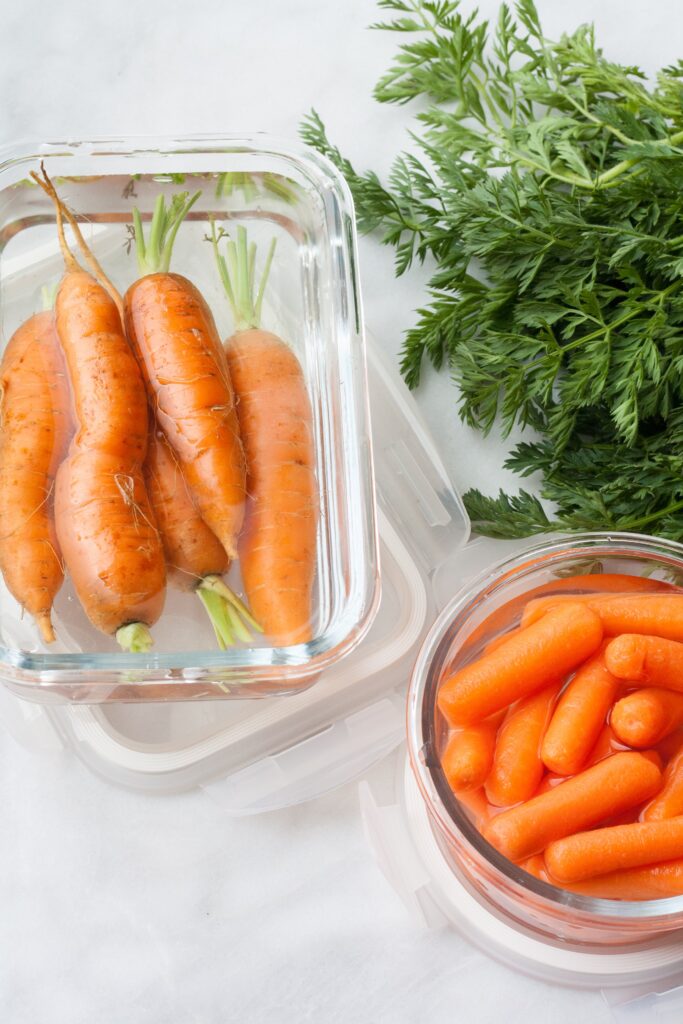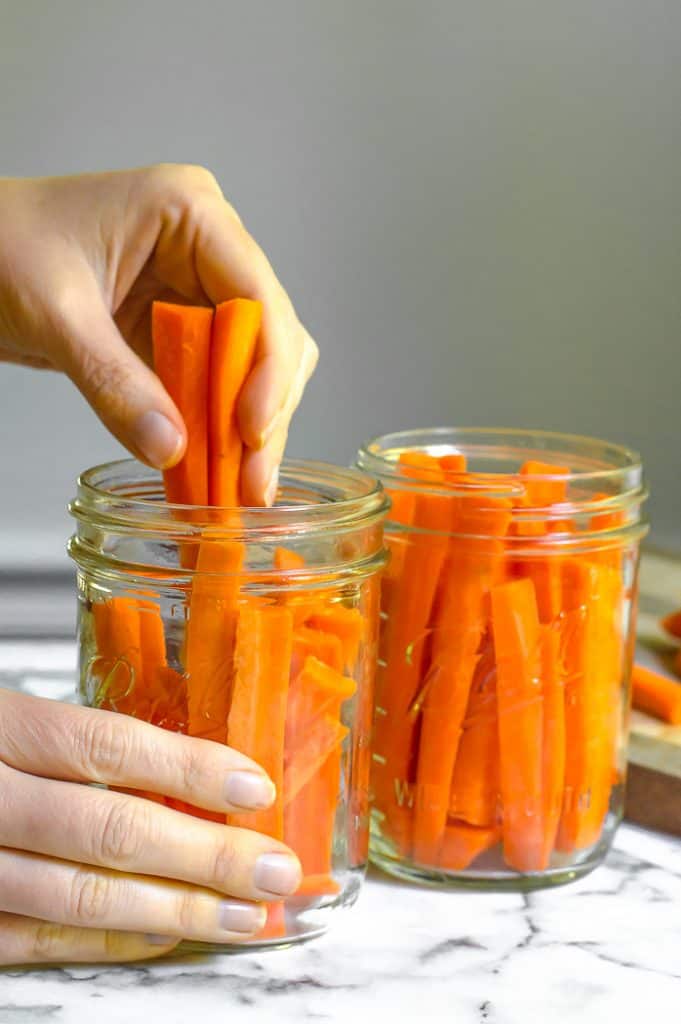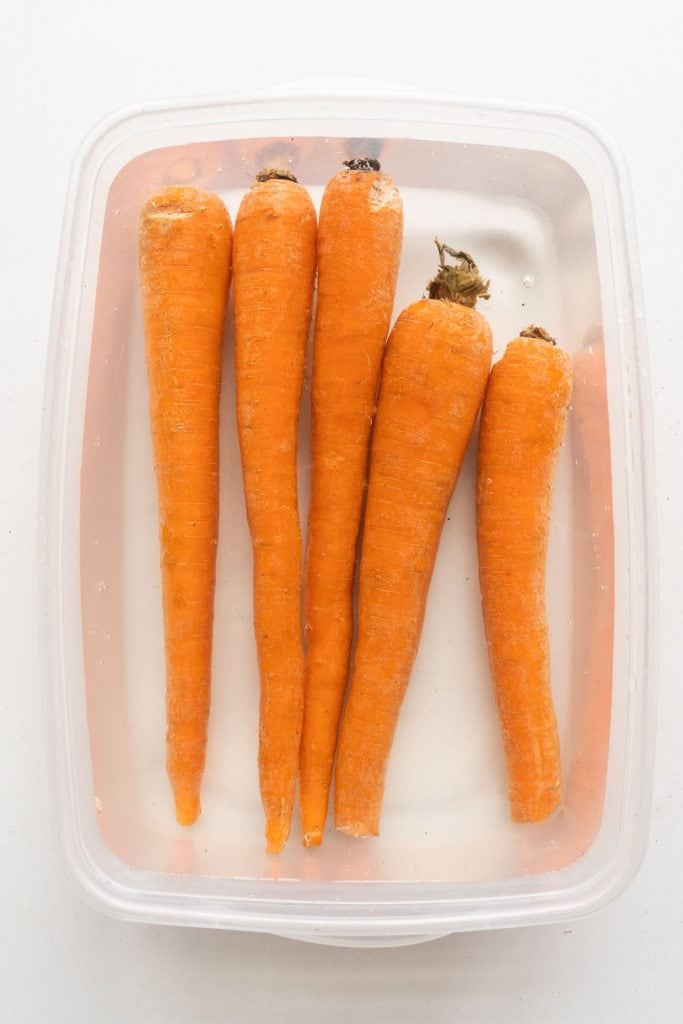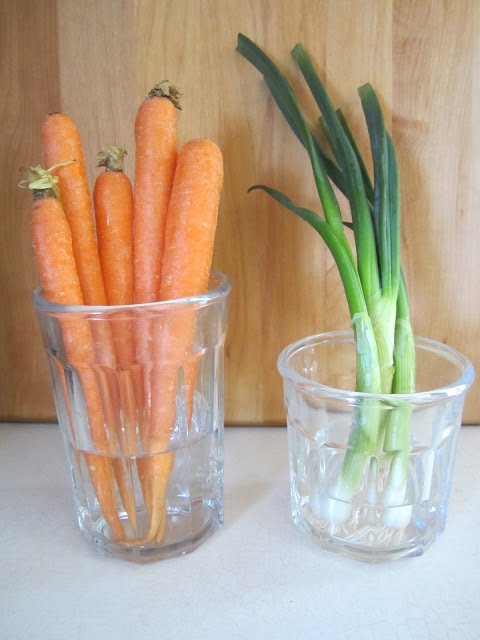Imagine this scenario: you come home from the grocery store with a crisp bunch of carrots, ready to be used in your favorite dishes throughout the week. The problem? Your refrigerator is overflowing, leaving no space for these vibrant orange gems. But fear not, because there are actually ways to keep carrots fresh without relying on your fridge. In this article, we will explore some simple yet effective methods to ensure your carrots stay crunchy and delicious, even without the help of a fridge.

Introduction
Carrots are a versatile and nutritious root vegetable that can be enjoyed in a variety of dishes. Whether you grow your own carrots or buy them from the store, properly storing them is essential to ensure they stay fresh and tasty for as long as possible. In this article, we will take a look at various methods for keeping carrots fresh without the need for a refrigerator. From proper harvesting techniques to storage options and preservation methods, we will cover everything you need to know to make your carrots last.
Proper Harvesting
Harvesting at the right time
The first step in keeping carrots fresh starts with proper harvesting. It’s essential to pick carrots at the right time to ensure they have reached their full flavor potential. Carrots are typically ready for harvest when their orange color develops fully, and they have reached their desired size. Gently pull the carrot out of the ground, being careful not to damage the roots or the carrot itself.
Gently brushing off excess soil
After harvesting your carrots, it’s important to remove any excess soil that may be clinging to them. To do this, gently brush off the soil using your hands or a soft brush. Avoid washing them with water, as moisture can promote spoilage. By removing the excess soil, you reduce the risk of rot and ensure that the carrots remain fresh for a longer period.

Trimming the Tops
Cutting off the greens
Once you have harvested and cleaned your carrots, it’s time to trim the tops. Carrot greens can continue to draw moisture from the carrot, reducing its shelf life. Use a sharp knife or scissors to cut off the greens, leaving about an inch of stem attached to the carrot. This will help retain some moisture while allowing the carrot to last longer.
Leaving a small stem
When trimming the tops, be sure to leave a small stem attached to the carrot. This will help prevent the carrot from drying out too quickly and maintain its freshness. The stem acts as a natural protective layer, sealing in the moisture within the carrot.
Cleaning and Drying
Removing dirt and debris
After trimming the tops, it’s essential to give your carrots a thorough cleaning. Use a damp cloth or a soft brush to carefully remove any remaining dirt or debris from the carrots. Avoid submerging them in water, as excessive moisture can lead to spoilage. Taking the time to clean your carrots will not only enhance their appearance but also help maintain their freshness.
Allowing carrots to air dry
Once your carrots are clean, it’s crucial to allow them to air dry before storing them. Place the carrots in a well-ventilated area or on a clean towel, making sure they are not touching each other. Allowing them to air dry for a few hours will help remove any remaining moisture, reducing the risk of rot or mold during storage.

Storage Options
Using a root cellar
If you have access to a root cellar, it is an excellent storage option for keeping carrots fresh. A root cellar provides the ideal conditions of cool temperatures and high humidity that carrots need to stay crisp. Place your cleaned and dried carrots in a wooden box or crate lined with sand. Make sure the carrots are not touching each other to avoid any potential spreading of spoilage. Store the crate in the root cellar, ensuring the temperature stays between 32°F and 40°F (0°C and 4°C) and the humidity is around 95%.
Buried storage
For those without a root cellar, burying your carrots is another effective storage method. Choose a dry spot in your garden or yard, away from direct sunlight. Dig a hole deep enough to accommodate the length of the carrot, ensuring there is enough topsoil to cover them completely. After placing the carrots in the hole, cover them with soil, leaving a small mound above the ground to protect against frost. This buried storage method will help maintain the carrots’ freshness by providing cool, consistent temperatures.
Mulching
Mulching is a popular storage technique that involves layering your carrots with insulating materials, such as straw or hay. Start by cleaning and drying your carrots thoroughly. Next, create a layer of mulch on the bottom of a wooden box or a well-ventilated container. Place a single layer of carrots on top of the mulch, making sure they are not touching. Add another layer of mulch and continue this process until the container is full. Cover the container with burlap or a breathable cloth to allow for air circulation. Keep the carrots in a cool, dry location, checking regularly for spoilage.
Sand storage
Another storage option for preserving carrots without a fridge is using sand. After cleaning and drying your carrots, place them in a container layered with sand. Ensure that the carrots are not touching each other and are completely covered by the sand. Store the container in a cool area, such as a basement or garage, where temperatures remain consistent. The sand helps regulate moisture levels and prevents the carrots from drying out or becoming too moist.
Temperature and Moisture Control
Maintaining cool and consistent temperature
Temperature plays a crucial role in prolonging the shelf life of carrots. It’s important to store them in an environment with a cool and consistent temperature, ideally between 32°F and 40°F (0°C and 4°C). Avoid storing carrots in areas that experience drastic temperature fluctuations, such as near heating vents or windows. Consistent cool temperatures help slow down the carrots’ respiration rate, keeping them fresh for longer periods.
Regulating moisture levels
Controlling moisture levels is also essential for preserving carrots. Too much moisture can lead to mold or rot, while too little can cause the carrots to dry out. If you are using storage methods like sand or mulching, they help regulate and maintain the optimal moisture levels. However, if you notice any excess moisture or condensation forming, adjust the storage conditions by increasing ventilation or removing any damp mulch.

Checking for Spoilage
Inspecting carrots regularly
To ensure the longevity of your stored carrots, it’s important to inspect them regularly for any signs of spoilage. Look for soft spots, mold, or discoloration, as these are indicators that the carrots may have gone bad. Remove any spoiled carrots immediately to prevent them from affecting the rest of the batch.
Removing spoiled carrots
If you do come across a spoiled carrot during your inspections, it’s crucial to remove it promptly. Mold and bacteria can spread quickly, and allowing a spoiled carrot to remain in storage can contaminate the others. Regularly checking for spoilage and removing any affected carrots will help maintain the freshness of the remaining ones.
Preserving Techniques
Freezing carrots
Freezing is an excellent preservation method for carrots that allows you to enjoy their freshness for an extended period. Start by cleaning, peeling, and blanching your carrots. Blanching involves placing the carrots in boiling water for a short period and then transferring them to an ice bath to stop the cooking process. Once blanched, drain the excess water and arrange the carrots in a single layer on a baking sheet. Place the baking sheet in the freezer until the carrots are completely frozen. Transfer the frozen carrots to airtight freezer bags or containers, ensuring to remove any excess air. Store them in the freezer for up to 12 months.
Canning carrots
Canning carrots is another popular preservation method that allows you to keep them for an extended period without refrigeration. Start by cleaning and peeling your carrots, then cut them into desired sizes, such as chunks or slices. Pack the carrots tightly into sterilized canning jars, leaving a one-inch headspace. Add boiling water or vegetable broth to cover the carrots, ensuring they are completely submerged. Apply the lids and rings to the jars, following proper canning procedures. Process the jars in a pressure canner according to the recommended guidelines for your altitude and jar size. Canned carrots can last for up to 1 to 2 years when stored in a cool, dark place.
Pickling carrots
Pickling is a great way to preserve carrots while also adding a tangy flavor. Start by cleaning and peeling your carrots, then cut them into desired shapes, such as sticks or coins. Prepare a pickling solution by combining vinegar, water, salt, sugar, and spices in a saucepan. Bring the mixture to a boil, then reduce the heat and let it simmer for a few minutes. Pack the carrot pieces tightly into sterilized mason jars, leaving a half-inch headspace. Pour the hot pickling solution over the carrots in the jars, ensuring they are fully covered. Apply the lids and rings to the jars, following proper canning procedures. Let the jars cool to room temperature before storing them in a cool, dark place. Pickled carrots can last for several months.

Carrot Storage Tips
Storing carrots with other veggies
Carrots can be stored alongside certain vegetables to help extend their freshness. Vegetables like beets, radishes, and turnips have similar storage requirements to carrots and can be stored together in a root cellar or container. However, it’s important to avoid storing carrots with vegetables like onions, garlic, or potatoes, as the gases they produce can affect the flavor and freshness of the carrots.
Avoiding proximity to ethylene-producing fruits
Ethylene is a ripening hormone naturally produced by some fruits that can accelerate the spoilage of vegetables, including carrots. Keep your stored carrots away from ethylene-producing fruits such as apples, bananas, or peaches. If possible, store them in separate areas to prevent any exposure to ethylene.
Using proper containers
Choosing the right containers for storing your carrots can make a significant difference in their longevity. Opt for breathable containers like wooden boxes or crates lined with sand, or use well-ventilated plastic or mesh containers. Avoid airtight containers, as they can trap moisture and result in rot or mold.
Rechecking stored carrots
Even after properly storing your carrots, it’s essential to periodically check on them. Inspect the stored carrots for any signs of spoilage, mold, or drying out. Remove any damaged or spoiled carrots immediately to prevent them from affecting the others. By rechecking your stored carrots regularly, you can ensure their freshness and take necessary actions if needed.
Conclusion
Keeping carrots fresh without a fridge is entirely possible with the right techniques and methods. From harvesting at the right time and properly cleaning and drying the carrots to choosing suitable storage options and preservation techniques, following these tips will help you enjoy fresh, flavorful carrots for an extended period. Experiment with different storage methods and find what works best for you. By properly storing your carrots, you can savor their crispness and natural sweetness long after they have been harvested. So go ahead, stock up on carrots, and enjoy their earthy goodness throughout the year!



